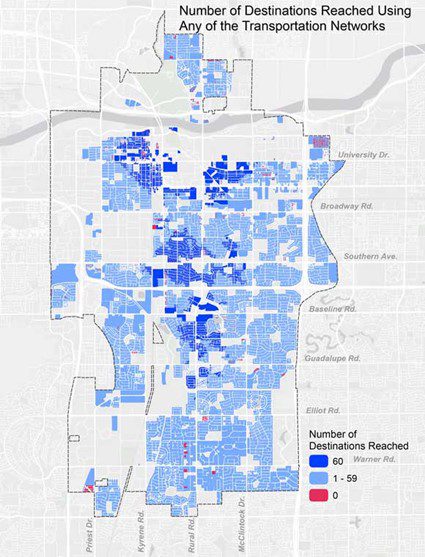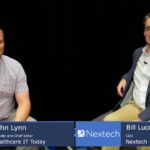The City of Tempe, Arizona, is using modern technology and an advanced infrastructure planning approach to enable people to make better health choices. This means ensuring everyone has access to fresh food, convenient transportation, and even adequate shade cover. It’s all part of their “20-minute city” initiative. To achieve their goals, city leaders are using a data-informed approach, enabled through GIS technology, to identify gaps in community infrastructure and planning.
Healthcare IT Today sat down with Dr. Stephanie Deitrick, Chief Data and Analytics Officer for the City of Tempe, to learn more about their public health initiatives and how it relates to being a 20-minute city.
Determinants of Health
According to the World Health Organization (WHO), there are many factors that affect the health of communities and individuals:
To a large extent, factors such as where we live, the state of our environment, genetics, our income and education level, and our relationships with friends and family all have considerable impacts on health, whereas the more commonly considered factors such as access [to health care] and use of health care services often have less of an impact.
Given this statement, its clear that improving health requires a holistic review of the factors that can make people and communities either healthier or sicker. For example, we know that access to fresh food and community services are important health factors that can be challenging for people who live and work in urban areas. The City of Tempe is addressing this challenge though its goal of being a “20-minute city” and is leveraging GIS technology to make data-informed development decisions.
Using GIS Technology for Healthier Living
In 2012, Kent Larson described the concept of a 20-minute city in a TED Talk. This concept has been adopted by many cities around the world, including the City of Tempe. The City has publicly defined their goal to create a vibrant mix of commercial, recreational, civic, and residential establishments within a 1-mile walking distance, 4-mile bicycle ride, or a 20-minute transit ride.
“Blending all the factors and all the requirements for a 20-minute city is very data-intensive,” explained Deitrick. “We needed to have a way to visualize all of this so that we can look for areas where there are gaps in coverage and to ensure optimal placement of shade, roads, and bike paths.”
The City of Tempe relies on GIS technology from Esri to visualize the data.

Source: https://www.esri.com/about/newsroom/arcuser/walkabletempe/
The map above shows the network analysis from the City of Tempe and the number of destinations, like grocery stores, that are reachable via walking, biking, and public transportation routes.
“We want to entice residents out of their automobiles and make use of other methods of transportation, which creates efficiencies in the transportation system and improved quality of life and public health,” explained Deitrick in a prior interview.
Watch the interview with Dr. Stephanie Deitrick to learn:
- Why the shade canopy is an important consideration for city planners
- The secret to being an effective GIS technology champion in an organization
- How they use wastewater data to improve community health
- Why an open-data approach can lead to unexpected benefits
Learn more about the City of Tempe at: https://www.tempe.gov/
Learn more about Esri at: https://www.esri.com/en-us/industries/health/overview
Learn more about GIS for Health at: https://www.healthcareittoday.com/gis-for-health/
Listen and subscribe to the Healthcare IT Today Interviews Podcast to hear all the latest insights from experts in healthcare IT.
And for an exclusive look at our top stories, subscribe to our newsletter.
Tell us what you think. Contact us here or on Twitter at @hcitoday. And if you’re interested in advertising with us, check out our various advertising packages and request our Media Kit.













